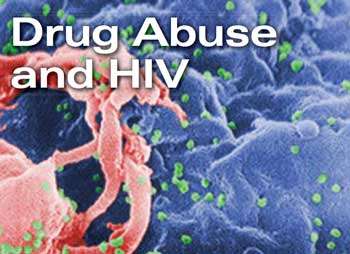One of the fastest-spreading recorded U.S. outbreaks of HIV since the inception of the epidemic is now occurring in southeastern Indiana, and it is being driven by injection drug use—specifically, abuse of the opioid painkiller Opana (oxymorphone). Sadly, this outbreak was preventable, given all that we know about HIV and its links to opioid addiction, yet adequate treatment resources and public health safeguards were not in place.
Following the discovery of 11 new HIV cases in Indiana’s rural Scott County in January, positive tests have been reported almost daily, and health investigators are actively locating and testing people who may have shared needles or had sex with those infected. The Indiana State Department of Health reports the number of new HIV cases has risen to 150 as of May 7. This county of 4200 people used to see under five new HIV cases each year. Most of those infected with HIV are also co-infected with the hepatitis C virus, according to the CDC.
Opana comes in pill form, so injectors crush the pills and dissolve the powder in water. Opana has a shorter half-life in the body than other abusable opioids, meaning that it clears the system faster and the user must take it more frequently to maintain the high or alleviate withdrawal. Those who abuse the drug may be injecting themselves between 4 and 15 times daily, and this means increased needle use—and thus, greater opportunity for needle sharing. Injection drug users in the community interviewed by Indiana State Department of Health investigators reported sharing needles with as many as five other people during a single session.
The situation in Indiana underscores much of what we already know about HIV, including how effectively it is transmitted via needle sharing and thus how its spread is driven mainly—although not totally—by injection drug use (only 4.6 percent of the new cases have been contracted sexually, according to the CDC report). We also know that treatment of opioid addiction using medications prevents the spread of HIV (“treatment as prevention”); yet those treatments remain poorly adopted and hard to access, especially in poor rural areas like Scott County that have limited access to health care.
This epidemic should not have happened. We have known for many years that providing free needles to injection drug users is a strategy that can prevent the spread of HIV in a community. A temporary emergency needle exchange program went into effect in Scott County in early April, but this was far too late to prevent the outbreak. Injection drug users receive enough clean needles for a week’s use in exchange for their used ones; however, they are asked to provide identifying information to the outreach center coordinating the program, which may deter some potential users.
The Indiana HIV outbreak should be a wake-up call that we cannot become complacent about HIV. Even though effective antiretroviral treatments have greatly reduced the morbidity and mortality from the disease and trials for an HIV vaccine are underway, addicted populations—who are often hard to reach with treatment and other interventions—continue to be vulnerable because of stigma and lack of healthcare resources, thus enabling the virus to spread. We must redouble our efforts to address the underlying problems of opioid abuse for all Americans so that we can shut the door on HIV, once and for all.

